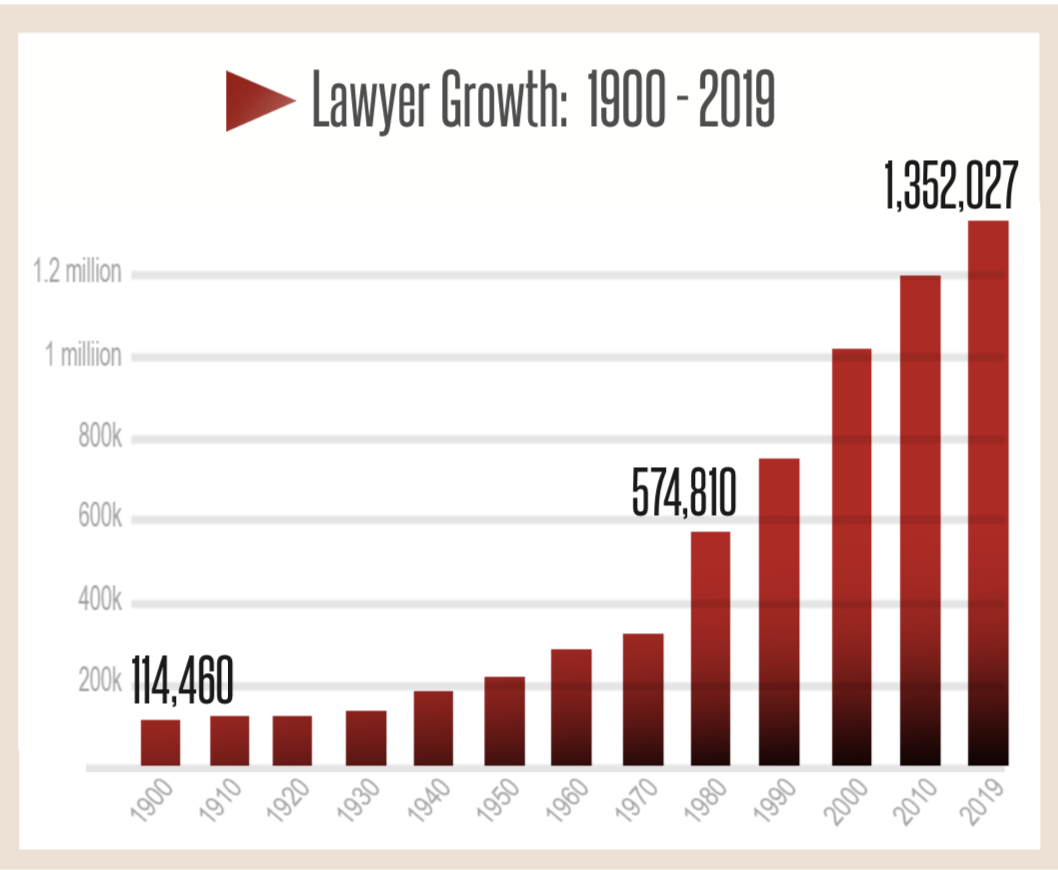ABA 2019 Report: Lawyer Demographics, Earnings, Tech Choices, and More

Our world is in the midst of unprecedented change, driven by globalization, technological innovation, economic downturns, and new ways of communicating and disseminating information. The world as we knew it before the turn of the century is no more, replaced by new media, new technology, and new ways of accessing and selling information. It’s a 24/7 digital economy that can reinvent itself overnight; blink and you’ll miss the latest and greatest trend, influencer, or breaking news story.
For many lawyers, the rapid pace of change has been unsettling, to say the least. Ours is a precedent-driven profession, rooted in history and tradition. Lawyers look to the past in order to predict the future. But when the future is primarily shaped by unfamiliar technologies incapable of being interpreted through the lens of the past, the first instinct is to resist change. This has proven to be a largely unsuccessful approach, as has been borne out by evidence of increased competition for legal services in both the global marketplace and right here in the U.S.
Study after study has shown that members of the legal profession are feeling the pressures to adapt, but aren’t always sure how to go about doing so. Lawyers readily acknowledge that profits are harder to come by, and it’s no longer feasible to conduct business as usual, but there’s rarely clear consensus regarding the best way forward.
The latest report issued by the ABA, 2019 Profile of the Legal Profession, offers further proof of the effects of change on the legal industry. In it you’ll find lots of information about the profession, including demographics and earnings data, along with insights on the pace of change and how law firms and lawyers are being affected by it.
Lawyer demographics
According to the report, last year, the number of active lawyers grew by only 0.7%. which is significantly less than the average year-over-year growth of 1.7% since 2000. In terms of raw numbers, at the start of 2019, there were 1,352,027 active lawyers in the United States, which represents an increase of 12.4% since 2010 when there were 1,203,097 active lawyers.
Where do lawyers practice? The states with the most lawyers are New York (182, 296), California (170,117), Texas (91,244), Florida (78,448), and Illinois (62,720).
But the states with the largest lawyer populations aren’t necessarily the states whose lawyer numbers are growing the quickest. Here are some of the states with the highest percentage of growth over the last decade. Florida was the fastest- growing state at 28%, followed by Utah (27%), North Dakota (24%), North Carolina (22%), Texas (22%), and New York (19%). And D.C. has the most lawyers per capita, with 56,000 lawyers who represent 1 out of every 13 D.C. residents.
The numbers regarding women lawyers are somewhat depressing. The percentage of women lawyers has remained stagnant at 36% for the past 3 years. In 2009 it was at 31%. The ratio of men to women lawyers is nearly 2:1. 64% of lawyers are men and 36% are women in 2019.
Even more sobering are the statistics regarding racial diversity. 85% of lawyers are white, compared to 77% of the U.S. population. Only 5% of lawyers are African American, 5% are Hispanic, and 3% are Asian. None of these statistics have changed over the past decade, even though the overall populations in the U.S. have increased over that same timeframe.
There’s lots more diversity data where that came from, so make sure to check out the report for additional insights on lawyers demographics.
Lawyer earnings
Per the report, the average lawyer salary is a bit higher than I’d expected: $144, 230. That being said, the 2008 recession dramatically affected lawyers’ income, with only a 9.3% increase in lawyer wages over the past 5 years, compared to the 45% increase seen between 1997-2002. Interestingly, according to the report, lawyers come in 4th overall for average industry wage, behind doctors, CEOs, and dentists.
Not surprisingly, lawyer earnings vary greatly by region. The top 5 metropolitan regions where lawyers earned the most in 2018 were: 1) San Jose-Sunnyvale-Santa Clara, CA ($207,950), 2) San Francisco-Oakland-Hayword, CA ($188,070), 3)Washington-Arlington-Alexandria, DC-VA-MD ($179.980), 4) Los Angeles-Long Beach-Anaheim, CA ($176,020), and 5) Houston-The Woodlands-Sugar Land, TX ($175,380).
In comparison, here are the metropolitan areas where lawyers earn the least: 1)Arecibo, PR ($39, 980), 2) Aguadilla-Isabela, PR ($49, 050), 3) Mayaguez, PR ($56,800), 4) Ponce, PR ($59, 870), and 5) Hickory-Lenoir-Morganton, NC ($63, 360).
And of course, that just scratches the surface when it comes to lawyer wages. Make sure to read the full report for all of the details.
Lawyers and technology
The report also includes a ton of interesting data about how lawyers are using technology and adopting it into their practices.
For starters, lawyers are adapting to the newfound realities of 21st century lawyering by ensuring that they’re covered in the event of a security breach. The percentage of law firms that now have cyber liability insurance has increased by threefold since 2015, with small firm lawyers with 2-9 lawyers in their firms leading the way at 36%.
Lawyers are also increasingly relying on offsite backups or the cloud to secure their law firm’s data, with 59% reporting that their firms backup up their data on servers located offsite.
Lawyers are also using 21st technologies to increase their mobility. 45% use laptops for work-related tasks while away from the office, 31% use smartphones, and 11% use tablets.
And not surprisingly, the statistics regarding telecommuting also show an acceptance – and appreciation for – the many benefits of using mobile tools to practice law on the go. 95% of large firm lawyers (100 or more lawyers) report that they telecommuted in 2018, followed by 70% of lawyers from firms with 10-49 lawyers. Lawyers from firms of 2-9 lawyers reported that they telecommuted 36 days in the past year, followed by lawyers from firms with 100+ lawyers who telecommuted 34 days.
The most popular place to work remotely was at home, with 78% of lawyers choosing this option. Hotels followed at 38%. Next was another office (23%), vacation home (17%), coffee shops or cafes (15%), and public places (14%).
That’s just a snippet of what you’ll find in this extensive and timely report. There are plenty of facts not addressed in this post, including data regarding law school admissions and graduates, bar passage rates, lawyer discipline data, lawyer wellness statistics and more. So make sure to check it out!


